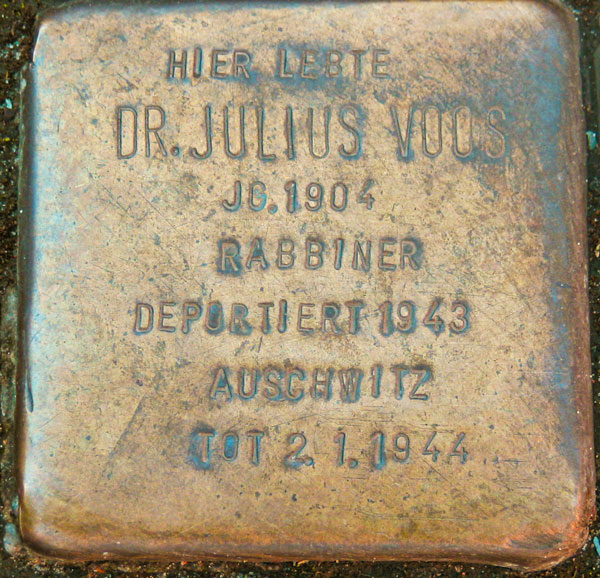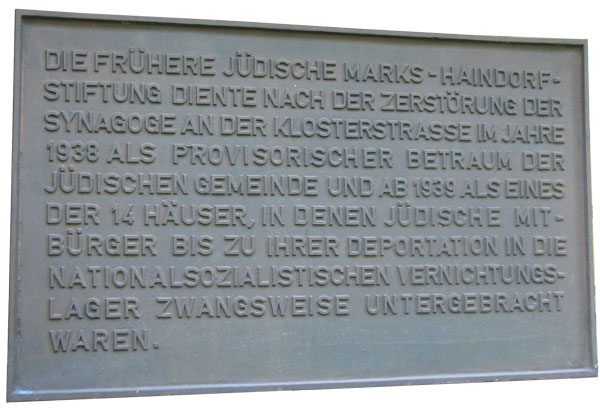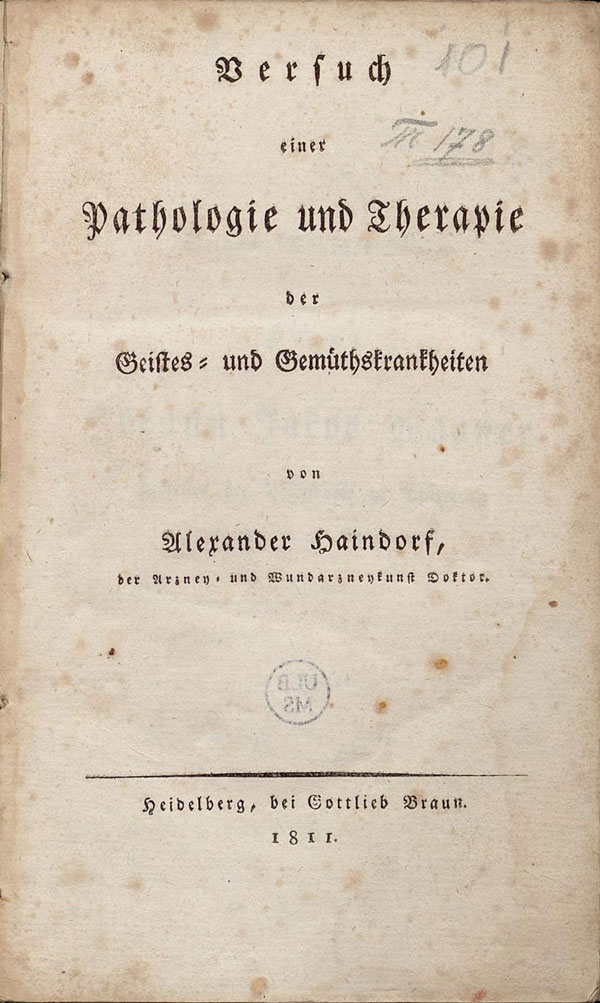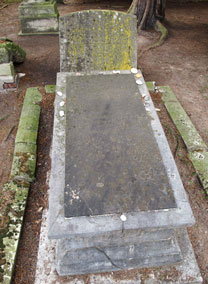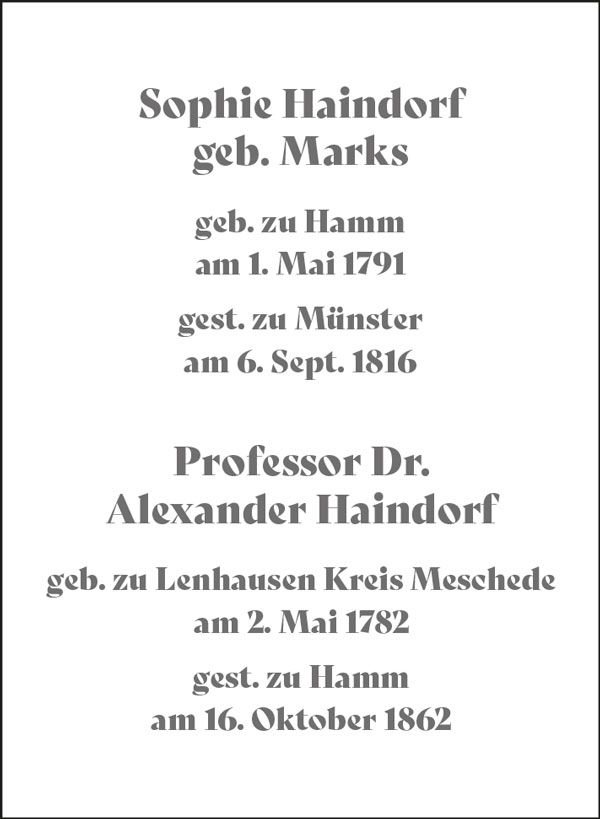The Marks-Haindorf Foundation
On 28 November 1825, the Jewish doctor Alexander Haindorf founded the “Verein zur Beförderung von Handwerken unter den Juden und zur Begründung einer Schulanstalt, worin arme und verwaiste Kinder unterrichten und künftige jüdische Schullehrer bilden sollen” (Association for the promotion of crafts among Jews and for the foundation of a school in which poor and orphaned children are to be taught and future Jewish school teachers are to be trained).
Continue
here
Amalgamation of Jewish and Christian culture
Drawing on his own life experience of rejection and discrimination by the Christian majority society, Haindorf pursued the goal of remedying the isolation and educational deficit of the Jews of his time by training capable teachers. Jewish children were to be familiarized with the educational heritage of the Christian surroundings, and the occupational restriction to trade imposed in the Middle Ages was to be overcome by training them as craftspeople. Haindorf writes in the fourth report of the association of 1830:
“Israelites should not in future be inferior to Christians in the higher culture of mind and heart. – I am not speaking here as a Jew who, blinded by a petty national feeling, would like to give his people a political importance that it has never had and can never have in the association of European states, nor as a reformer, relative and friend who would like to make his Christian confreres lenient and permissive, but as a man who is no less pained to see others suffer guiltlessly than to endure misfortune himself”.
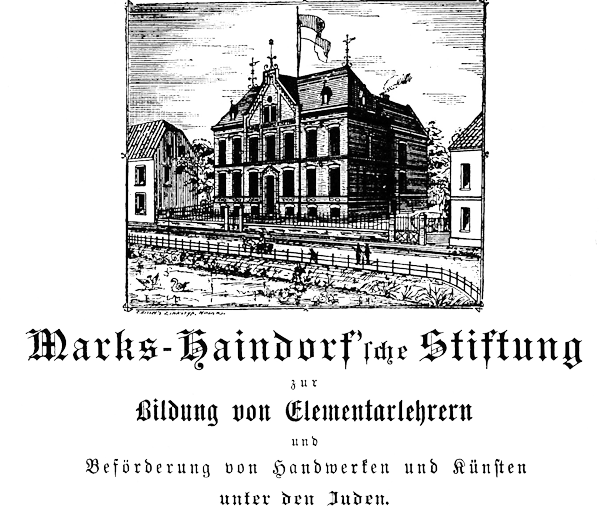
Title page of the 33rd annual report of the Marks-Haindorf Foundation from 1886 (excerpt), with the building that was inaugurated in 1884
Haindorf, who can be described as an early representative of a liberal Judaism, sought a mutual rapprochement of Jewish and Christian culture, and described this process as “amalgamation” in contrast to the one-sided adaptation to the Christian majority society demanded by radical reformers.
The Haindorf seminary quickly established itself as the centre of Jewish teacher training in Westphalia and the Rhine province. The association also provided Jewish boys with training in the trades in order to counteract the stereotypical prejudices against Jewish traders and merchants. Also affiliated with the association was an elementary school, where pupils, regardless of social class and religion, were taught by Jewish and Christian teachers. The co-educational teaching followed methods considered progressive at the time, such as a holistic approach. Sometimes it was even the case that more Christian than Jewish children attended the elementary school.
Title page of the 33rd annual report of the Marks-Haindorf Foundation from 1886 (excerpt), with the building that was inaugurated in 1884
The Haindorf seminary quickly established itself as the centre of Jewish teacher training in Westphalia and the Rhine province.
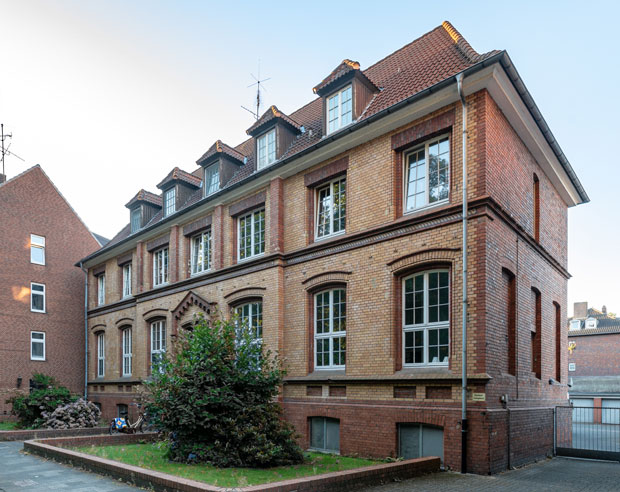
When Alexander Haindorf died in 1862, his son-in-law Jakob Loeb took over the running of the association, which he then transformed into a corporate body under public law in 1866 as the Marks-Haindorf Foundation, and was granted corporate rights. The budget of the Prussian Ministry of Culture gave the Foundation an annual state subsidy from 1874 onwards. The foundation stone of a new school building was laid on Haindorf’s 100th birthday in 1884 (see the picture above). When teacher training was reformed in Prussia, the Marks-Haindorf Foundation had to stop training Jewish elementary school teachers in the 1920s. However, the Foundation remained in existence as a Jewish elementary school.
Over the course of a good 100 years, 430 Jewish teachers were trained who carried the ideals of the Marks-Haindorf Foundation into the Jewish schools of Westphalia and, in part, the Rhine province.
From 1938 on Jewish pupils were excluded from public schools by law.
Recommended
reading
Susanne Freund: Jüdische Bildungsgeschichte zwischen Emanzipation und Ausgrenzung – das Beispiel der Marks-Haindorf-Stiftung in Münster (1825-1942), Münster and Paderborn 1997.
New centre of reconstruction
In the post-war period until the inauguration of the new synagogue on Klosterstraße, the building of the Marks-Haindorf Foundation was the focal point and nucleus for the new Jewish community. Here was a prayer room, used for services and celebrations.
The married couple Else and Siegfried Goldenberg, who were instrumental in rebuilding the Jewish community in Münster after the Holocaust, had their home in the Marks-Haindorf Foundation.
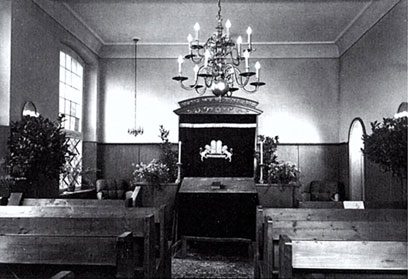
On 6 January 1951,
Paul Spiegel (among other roles, President of the Central Council of Jews, 2000-2006) celebrated his Bar Mitzvah, the first in Westphalia since the Holocaust.
In April 1953,
the first circumcision took place of a member of the new Jewish community: the Brit Milah of Uriel Frankenthal.
On 29 December 1959,
the first post-war marriage took place here: Ingrid Wilms and Samuel Weinstein.
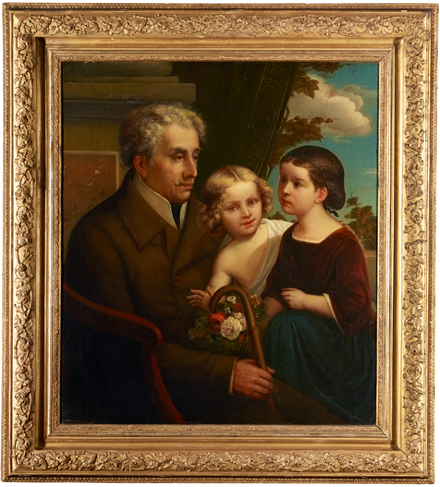
and his grandchildren Agnes and Robert Loeb, 1854
Prof. Dr. Alexander
Haindorf
(1784–1862)
Jewish enlightenment figure and reformer – doctor and educationist – art collector and patron of the arts
Alexander Haindorf – this was the name that Hirsch Alexander (Hebrew: Zwi Nessannel) had adopted in 1808, when a law in the kingdom of Westphalia required Jews to adopt hereditary surnames – was born in Lenhausen, district of Meschede (Sauerland), on 2 May 1784.
After the death of his parents, Alexander grew up in Hamm, where the head of the Jewish community provided him with the chance of benefitting from a humanistic education. Meeting his uncle, the liberal rabbi of Hamm, Anschel Hertz (1730-1811), had a great effect on him, as did witnessing the rejection and discrimination experienced by his fellow Jews at the hands of the Christian population. Anschel Hertz enabled the young Alexander Haindorf to attend the traditional grammar school in Hamm, where Haindorf was the first Jewish pupil, and later to attend the universities of Würzburg, Jena and Heidelberg, where Haindorf studied medicine as well as philosophy and history.
In 1810, Haindorf received his doctorate of medicine in Heidelberg. The dissertation thesis was awarded the gold medal of the Grand Duke Karl Friedrich of Baden. Haindorf became engaged to Sophie Marks, daughter of Elias Marks from Hamm.
In 1811 the medical habilitation took place
He then began lecturing in Heidelberg, the first Jew to do so. When Haindorf was refused a position as a university professor, for reasons not only material but also religious (there was “not yet a single example of a Jew being employed as a public teacher at any university in Germany” (vote cast by Professor Moser on 29 July 1812)), he left the university in 1812 and embarked on a study trip to France until 1814.
In 1815, Alexander Haindorf married his fiancée. One year later daughter Sophie was born; his wife died one month after the birth.
Alexander Haindorf also opened a medical practice in Münster in 1816, his patients including many noble families in the immediate vicinity.
In 1925, he founded the “Association for the promotion of crafts among Jews and for the foundation of a school in which poor and orphaned children are to be taught and future Jewish school teachers are to be trained”.
Haindorf was the first unbaptized Jew to hold the title of professor in Prussia.
Alexander Haindorf died, respected and honored, on October 16, 1862.
He must have been appointed titular professor in 1831 at the latest, since the Münster government refers to him by this title in an official letter assigning him the business of providing medical care in Münster’s prison. Haindorf was the first unbaptized Jew to hold the title of professor in Prussia.
As a doctor, private teacher and educationist, he enjoyed a prominent position and was one of the Jews whom the Christian majority society also accepted. He was a founding member of the “Westphalian Arts Society” (1831) and belonged to the “Association of Friends of the Arts in the Prussian State”, and the “Arts Society for the Rhineland and Westphalia”, although Jews were generally excluded from non-Jewish societies, etc. From 1816 until his death, he assembled an exquisite collection of about 400 old German and Dutch works of art, the collection becoming an important foundation of the Münster State Museum. Haindorf also supported numerous young artists.
In 1859, at the age of 75, Haindorf gave up his practice, but not the running of the school.
His grave is located in the Jewish cemetery in Münster. Here is also buried his wife Sophie, who had already died on 6 September 1816 at the age of 26, one month after the birth of their daughter Sophie.
In 2011 Helga Böhme donated the library of Alexander Haindorf and the collection of Loeb Böhme to the central library of the University of Münster (ULB).
Recommended reading
Susanne Freund: Alexander Haindorf. Reformer – Pädagoge – Mediziner – Kunstsammler (Jüdische Miniaturen 263), Leipzig 2021.
Susanne Freund: Alexander Haindorf. Grenzgänge zwischen jüdischer und christlicher Kultur. In: Folker Siegert (Hrsg.): Grenzgänge. Menschen und Schicksale zwischen jüdischer, christlicher und deutscher Identität. Festschrift für Diethard Aschoff (Münsteraner Judaistische Studien 11), Münster 2002, 174–194.
Gisela Möllenhoff: Alexander Haindorf. In: Hans Galen (Hrsg.): Jüdische Porträts. Graphische Bildnisse prominenter Juden Mitteleuropas, Hamm 1994, 58–60.
Hans-Joachim Schoeps: Alexander Haindorf (1784–1862). In Robert Stupperich (Hrsg.): Westfälische Lebensbilder Bd. 11, Münster 1975, 97–111.
Idea and text: Ludger Hiepel MA
Photos and sources: 1: Wikipedia/in the public domain – Link; 2: Dietmar Rabich/Wikimedia Commons – Link; 3: Wikipedia/in the public domain – Link; 4: in the public domain Link; 5: Jewish community Münster archives; 6: LWL-Museum für Kunst und Kultur, Westfälisches Landesmuseum, Münster; 7: digital reproduction provided by the University and State Library Münster Link; 8: Ludger Hiepel MA
